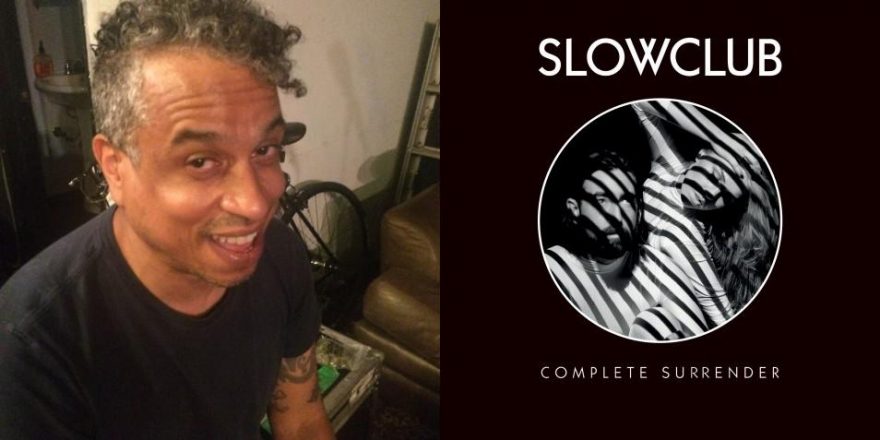One of my favorite parts of the new Cosmos series occurred in Episode Three, when the show’s host, the esteemed astrophysicist Neil deGrasse Tyson, discussed how humans’ aptitude for pattern recognition is so pervasive that sometimes we see patterns that aren’t even there.
That struck a huge chord with me, because as a musician I constantly find myself thinking I’ve figured out everything about a band or artist well before I should have an opinion. It’s a game of sorts, one that I consider myself to be winning when I’m wrong.
Never having heard of Slow Club prior to stumbling across them on the internet, all I had to work with was their name and the black-and-white cover art for their new album Complete Surrender. I immediately figured the album would have lo-fi drum loops and MBV-inspired guitars, and they’re probably vying to get played by genre-bending DJs at some underground hipster party. Anyone who knows me knows that I’m fully into all of that.
With those assumptions in mind I put on a pair of headphones, had a smoke, had a sip and hit play.
Once the kick drum hit on the opening track, “Tears of Joy,” I realized my assessment was a bit off the mark. It evoked a long-dormant memory of a mixing session for the album Slip, the 1993 debut from my band Quicksand. The memory involved what the assistant engineer called the “sonic landscape,” which was a term he used to describe the illusion of the space the music appears to occur in.
My assumptions about an over-compressed, bit-reduced, sample-laden sound that would spark visions of laptops and Ableton sessions — things I’m also a huge fan of — were quickly shattered. The second song, “Everything Is New,” had kicked in and I was officially wrong… it’s a massive-sounding record! Sonically, it was as if I had stepped into the orchestra room at BBC 1’s Maida Vale studios while Slow Club were playing with a full band and choir.
I wanted to run into that space and check out all their gear and learn about their recording process. It’s the type of record that I wish had a gatefold cover to look at, with lots of pictures of them recording, and liner notes so that I could imagine it going down while listening to the songs.
Which brings me to the songs. They’re as well crafted as they are finely recorded. The arrangements are well developed, the musicianship is creative; they have strong lyrics and sweet voices. The way they play acoustic guitars really resonated with me.
So my speculations regarding the Slow Club’s sound were off and that has me really stoked on them. The reason being that rather than having a sense of being given a new brochure for a town I know like the back of my hand, I feel as if I’ve inadvertently crossed the border into a new realm with new wonders.
Just like many a First World citizen who has wandered into unfamiliar terrain, I looked to my device for orientation. Situated somewhere in Sheffield, a borough in South Yorkshire, Charles Watson and Rebecca Taylor have fashioned a world for themselves that they should be proud of. In fact, they seem to be. Having formed in 2006, they seem to have the vibe of a band that is coming into its own and will have a lot more in store.
Sonically, they cite different eras from what I expected. The material draws heavily from various ’60s and ’70s sounds, evoking thoughts of artists such as the 5th Dimension, Pink Floyd and Phil Spector’s “wall of sound” productions. That said, Complete Surrender is hardly a derivative affair. Rather than resting in the comfort of their influences, they added really cool elements to the conversation, musically speaking, that I find inspiring as a songwriter. Classic, yes, but also fresh as hell.
Slow Club’s focus and attention to detail are evident in every aspect of Complete Surrender — even the album’s sequence works really well. The songs flow together in such a way that I was on my third listen before I knew it. Definitely a good sign! Complete Surrender is a complete album and great time.








